How the His Dark Materials finale sets up the war of the worlds in season 2

Warning: Spoilers from His Dark Materials season 1 finale, “Betrayal,” are discussed in this article.
The stage is set, the portal is open, and Lyra’s world is about to get immeasurably bigger.
With the season 1 finale of His Dark Materials, thus ends the events first chronicled in author Philip Pullman‘s The Golden Compass and adapted for this eight-episode TV tale. Lyra (Dafne Keen), who now goes by the panserbjørn-dubbed “Lyra Silvertongue,” freed her father from imprisonment in Svalbard, but Lord Asriel (James McAvoy) had other plans in mind. The young girl saved her best friend Roger (Lewin Lloyd) from her mother Mrs. Coulter (Ruth Wilson) only to deliver him to Asriel, who then snatched him in the night and killed him with similar daemon-severing tools the Gobblers used on children in Bolvangar. The energy released from his death opened a portal to another world, to the city glimpsed in the Aurora lights.
Now, Lyra is alone in this world and she has two options: remain alone or follow her father to this other world as he searches for the source of the oft-mentioned Dust in the hopes of destroying it. Lyra never backs down from a challenge, so the answer is clear, which sets up a season 2 that is based on Pullman’s second novel in his trilogy, The Subtle Knife, a multidimensional romp that expands the story and themes at play.
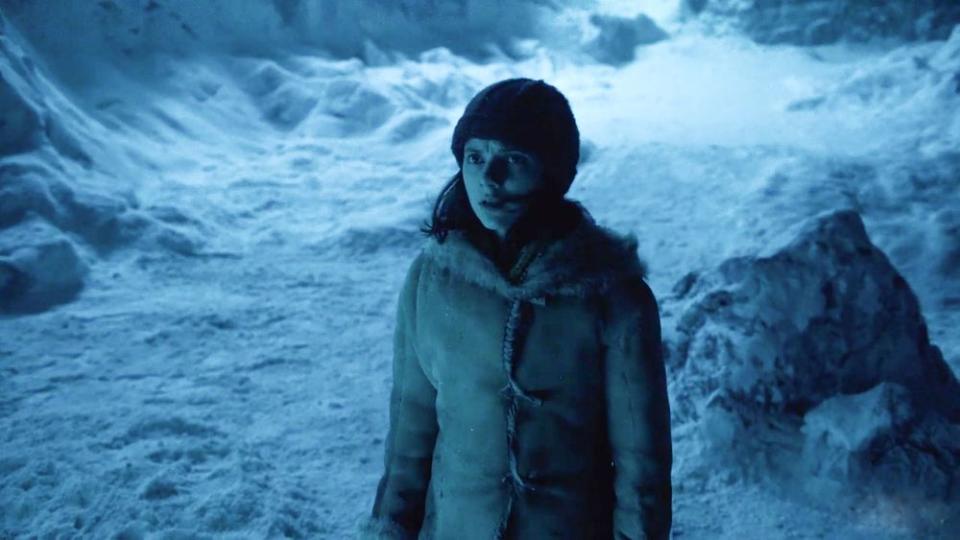
Much like with Pullman’s books — which are comprised of The Golden Compass, The Subtle Knife, and The Amber Spyglass — His Dark Materials has to explain three things. “The whole of the first season is about daemons,” executive producer Jane Tranter once told EW of these talking animals, physical manifestations of human souls that exist outside their bodies in Lyra’s world. “The whole of the second season [based on The Subtle Knife] is about multiple worlds, and the whole of the third season [based on The Amber Spyglass] is about Dust.” But, she added, “If you don’t show some of that to an audience in the first episodes, how are they gonna go on this journey?”
EW spoke with some of the main players in the cast and crew to break down a few of the finale’s biggest moments and discuss what now lies ahead.
Sins of the father
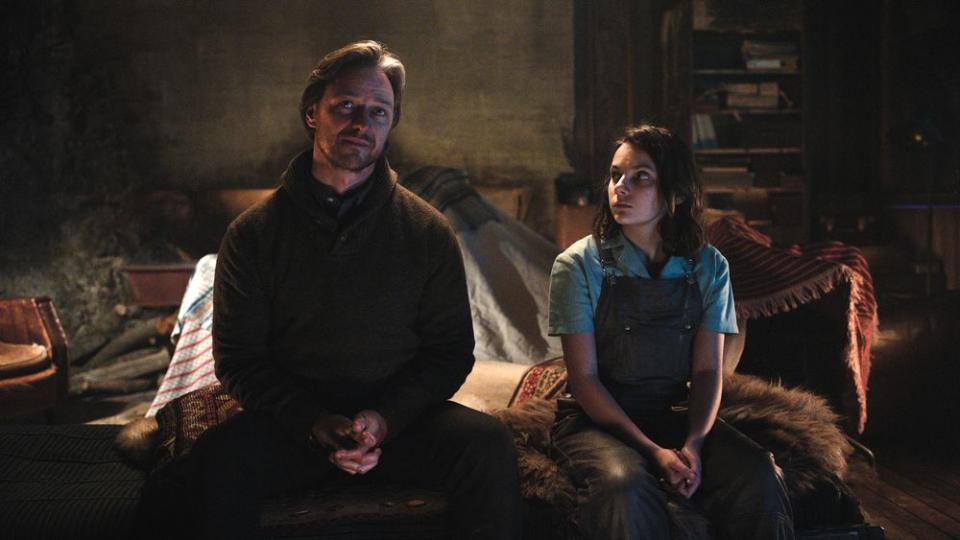
McAvoy, as a last-minute addition to the Dark Materials cast after a previous actor bowed out, squeezed in 20 days of shooting around his schedule for the film It Chapter Two: Ten days were dedicated to Asriel’s introduction in episode 1, and 10 more for these final moments between Asriel and Lyra, a moment teleplay writer Jack Thorne (the guy behind Harry Potter and the Cursed Child) saw as pivotal for the finale.
“Getting that right and striking the right balance of the horror and the hope felt really important,” Thorne says. “There’s a brutality to the end of the books.” This moment, in which Asriel first rebuffs Lyra upon seeing her and then ultimately betrays her after their discussion about Dust, is about “her vulnerability and his invulnerability.
“She, in that moment, who has been hardened through this whole journey to get to him, just opens herself up a little bit and he puts a sheet of steel between them,” Thorne explains. “By this point, I had written that scene in Bolvangar [in episode 6] between Mrs. Coulter and Lyra which went a little bit further away from the book than some of our other scenes. I knew that Mrs. Coulter had shown her vulnerability and it was [now] quite exciting for Lyra to be in front of a guy who never admitted that he was her father and just say, ‘Look at me, Dad!’ Mrs. Coulter, whatever her faults, did try in that scene to explain herself a little bit and Asriel just refuses. One of the few advantages we have in the television show is that Philip couldn’t write silence, those pregnant silences that tell you so much.”
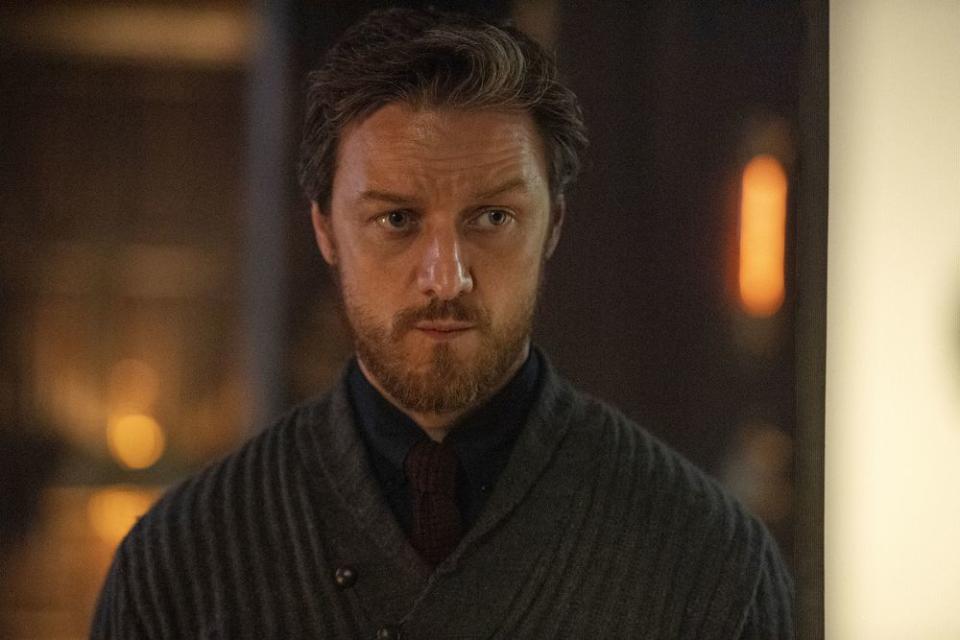
Thorne went through countless drafts of the scripts to get it right. According to Tranter, “Many, many years ago, there was a version where Asriel was in every episode. Philip told us what he was doing. We knew that Asriel got imprisoned by the bears, but the bears really paid and supplied all of the work for his laboratory and they enabled Asriel to get on with his experimentation. There was a draft once where we saw Asriel get captured by the bears and see all this stuff happen to him, but it never really worked. We circled back in a way that Philip got right the first time. He has Asriel at the beginning, he has Asriel at the end.”
McAvoy agreed. “His absence is a big original factor for Lyra and it’s important to be mysterious,” he previously told EW. “So, we can explore further but, actually, you end up demystifying him somewhat. He needs to remain an enigmatic and slightly mercurial figure in Lyra’s view.”
In season 2, which McAvoy filmed without It getting in the way, there’s more opportunity to track the character’s movements on screen. “There is definitely the opportunity to explore stuff that isn’t in the book for Asriel because Asriel isn’t in book two,” the actor says. “If we take a break from Asriel in season 2 and only hear about him, that might become unsatisfying for the audience. They’ll just be hearing about this incredible stuff he’s doing but in a different place.”
Thorne considers his discussions with Pullman about Asriel to be “the greatest meetings” of his life. Thorne and Tranter tracked every mention of Asriel in the books and brought a timeline of events to the author for guidance. “Philip just talked to us about different things he had in his head that obviously weren’t on the page.” Other details came from hints in the books themselves. Thorne points to script editor Xandria Horton, whom he says “found stuff in the appendixes” that gave them “a little bit more of a window into what was going on between Asriel and Stanislaus at different points.” Fleabag‘s Andrew Scott plays Stanislaus Grumman, a.k.a. Will father’s John Parry, who makes his formal debut in season 2 after a few brief glimpses in season 1.
Where there’s a Will, there’s a way
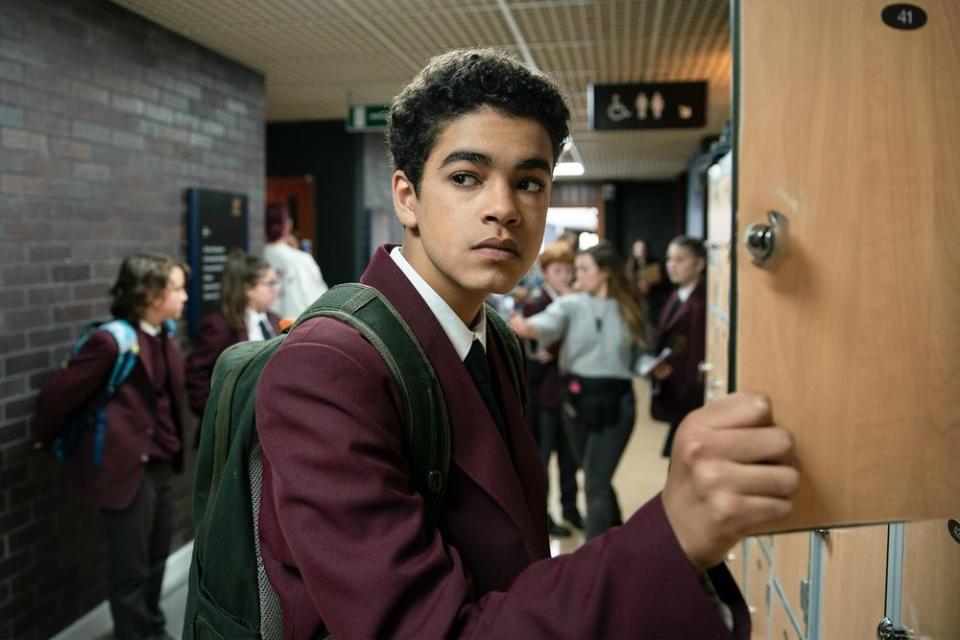
One of the biggest surprises — and biggest departures from the source material — was the introduction of Will in episode 5. The character, played by Amir Wilson, isn’t addressed until the beginning of The Subtle Knife and remains a prominent figure for the remainder of Pullman’s story. Tranter and Thorne thought endlessly about how to incorporate Will’s story into their show, partly so viewers weren’t thrown off by his arc in season 2.
“We could’ve started season 2 with just Will and telling his story,” Thorne says. “The problem was, knowing television, you’d end up cutting it back and cutting it back and cutting it back so it was a sliver of what it should be.” The team grappled with how far to take Lyra and Will’s story in season 1, and they didn’t find a balance until the editing room. Jamie Childs, who directed the season 1 finale, cut together scenes as both children walk through respective portals into the same parallel world. Thorne calls it “pure visual storytelling” — another advantage the show has over the books.
“The whole reason to get Will involved was for this final moment,” he continues. “I was really fascinated by how heroes are made. Lyra is made in such a heroic way. She tumbles through different scenarios that test her in different ways. Will’s heroism is made by caring for a mentally ill mother. A lot of the reason we always wanted to write Will in is so we could have the promise of Will and Lyra, which is so crucial for the way the rest of the show is going to work.”
Coulter culture
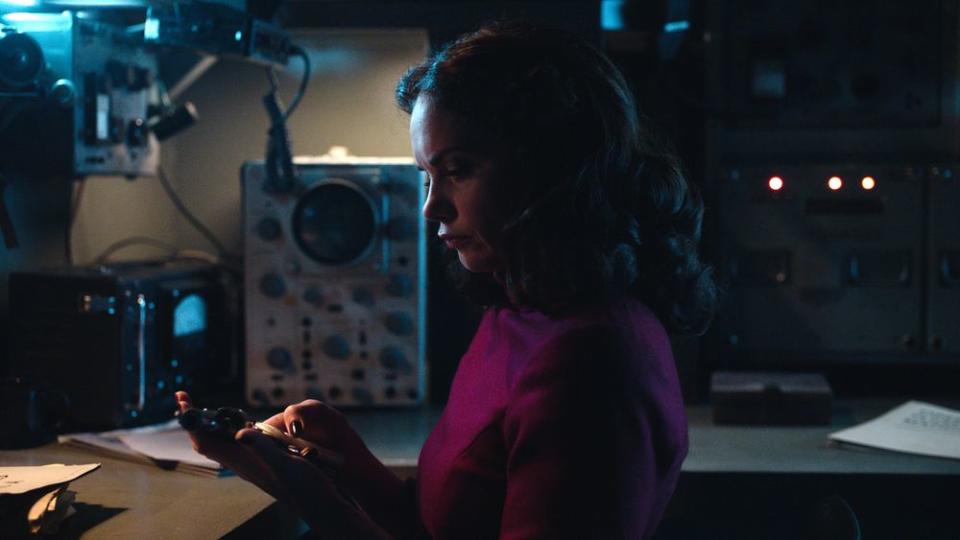
Wilson is still peeling back all the layers that comprise Mrs. Coulter. The finale finally brings her together on screen with her former lover, Asriel, who tempts her to come to the new world with him to complete his mission…or does he?
“The central question was when either of them were telling the truth, an answer that should be for an audience to decipher, yes, but one that had to be there in the playing,” Thorne says. “We picked and unpicked and really asked so many questions about their history, about what they feel in that moment, about what underpinned their relationship, the damage beneath it, and the passion and glory of it.”
“Jack hints and whispers of a whole backstory across both season 1 and season 2 that might suggest a little bit about how Mrs. Coulter became Mrs. Coulter, from the name to the whole way she puts herself together,” Tranter elaborates. “One of the great advantages of working on a trilogy is you know what happens in the end so you can track back from that point. We knew where Mrs. Coulter ended not only in The Amber Spyglass but where she ends in The Subtle Knife, which is a place of considerable madness. That gave us a lot of fun to pull forward and think, ‘Well, how does she get there? How does this woman of such rigid control, look like the most charming woman in the world, get to the place where she does in the end of the second season?’ We just pulled at those threads of Mrs. Coulter to trace every episode.”
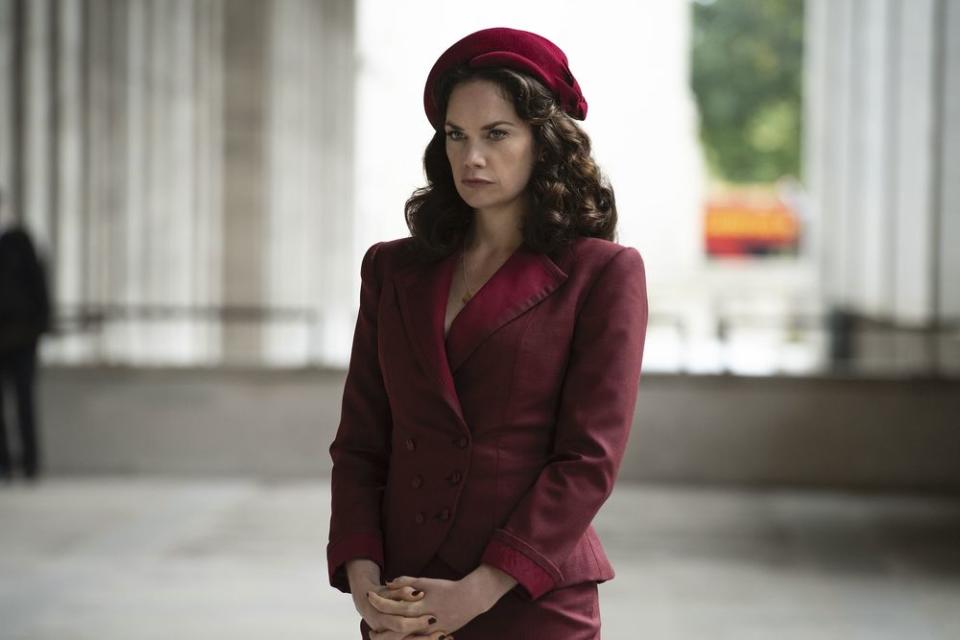
“We all got very excited when we worked out how Mrs. Coulter was able to separate from the golden monkey,” Thorne adds. He says it was “probably as an adolescent, maybe a latent adolescent,” when she “trained herself through pain. We did a lot of thinking about that and how to place that in the script.”
Part of the fun now with Coulter is her wardrobe, which itself is a weapon she uses to manipulate her surroundings. For season 1, Tranter notes how costume designer Caroline McCall “stopped the development of fabric material around the mid-1950s” for Lyra’s world. “So, there’s no man-made fabric” — a poetic nod to the only woman of high rank in the man’s world of the Magisterium. “The golden monkey’s got this incredible, lustrous fur that, if it wasn’t taboo to touch somebody else’s daemon, you’d really want to stroke the golden monkey,” Tranter says of the character’s daemon. “Quintessential Mrs. Coulter, she has a daemon that invites itself to be stroked. Ruth was very keen in working with Caroline on the idea that Mrs. Coulter’s costumes were very tactile, that it was velvet or satin or fur, things that children would want to touch and look very inviting but really put together in a sharp way.”
For season 2, though she initially rebuffed Asriel’s invitation in the finale, Wilson promises Mrs. Coulter crosses worlds. “What does Mrs. Coulter look like in our world? It’s a really interesting discussion,” the actress says. “Does she wear the same clothes or does she adapt? Every conversation you have about her leads to more and more conversations about her. As she moves, you want to see her grow. She develops and she learns and she changes and she goes through a huge emotional journey, so that has to be reflected in her clothes, as well, and in her manner in which she changes by season 3.”
Witches
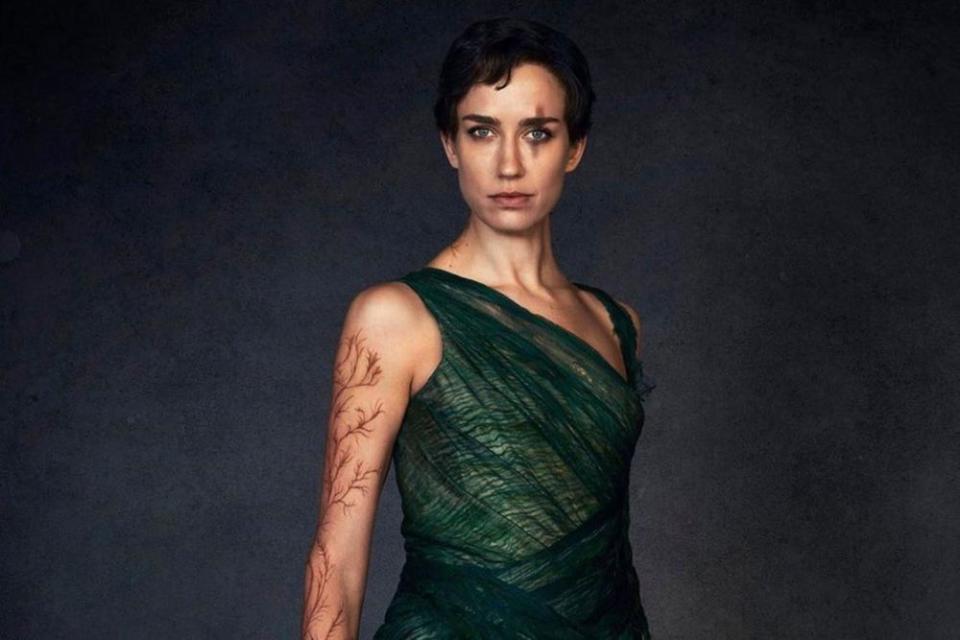
When EW spoke with Wilson, it was a few weeks after San Diego Comic-Con, only a couple days into filming season 2. The actress said she already filmed a scene in which she tortures a witch. “That’s been quite fun but also exhausting and pretty intense,” she says of that moment, which comes directly from the opening chapters of The Subtle Knife.
Witches, however, have largely remained absent from season 1, with the one exception of Serafina Pekkala (Ruta Gedmintas). In The Golden Compass, Serafina leads her witch clan to help rescue the children at Bolvangar and the panserbjørn later face rival clan witches in their battle against the Magisterium airships.
“There are lots of complicated reasons for that,” Thorne explains of their limited role in the series. “Bolvangar, it was partly budgetary but partly also wanting to celebrate Serafina’s strength on her own — the battle is obviously not as big as in the books and it felt like something Serafina could accomplish on her own. The bears-witches, it felt like the Magisterium could do on their own and the wrong time to establish something new — Magisterium-siding witches. Sorry, not very fascinating answers. Basically, budget pragmatism and trying to find smaller solutions to the problem. I don’t think it’s a spoiler to say we see a lot more of the witches in season 2.”
Spying season 3
HBO and BBC have not formally announced a third season, but the plan has always been to tackle the events of The Amber Spyglass as well. Seasons 1 and 2 needed to be filmed as close together as possible so Keen, who’s now 14, wouldn’t look like she aged too much since shooting the first eight episodes.
“With season 3, there’s a little bit of time having passed with the beginning of Amber, so we weren’t as quite, ‘We need to go, we need to go, we need to go!'” says Thorne. “We’ve got a young girl as our lead, we need to get these two done and then they [HBO and BBC] need to sit back and see whether it works for them. So, we’re waiting on that.”
Related content:
Hail to the king! His Dark Materials star goes behind Iorek and Iofur’s death match
His Dark Materials star opens up about that surprise character debut
Fleabag star Andrew Scott goes from Hot Priest to His Dark Materials
How HBO’s His Dark Materials turns into a companion to the original books
A Subtle surprise: His Dark Materials team unpacks that world-changing reveal

